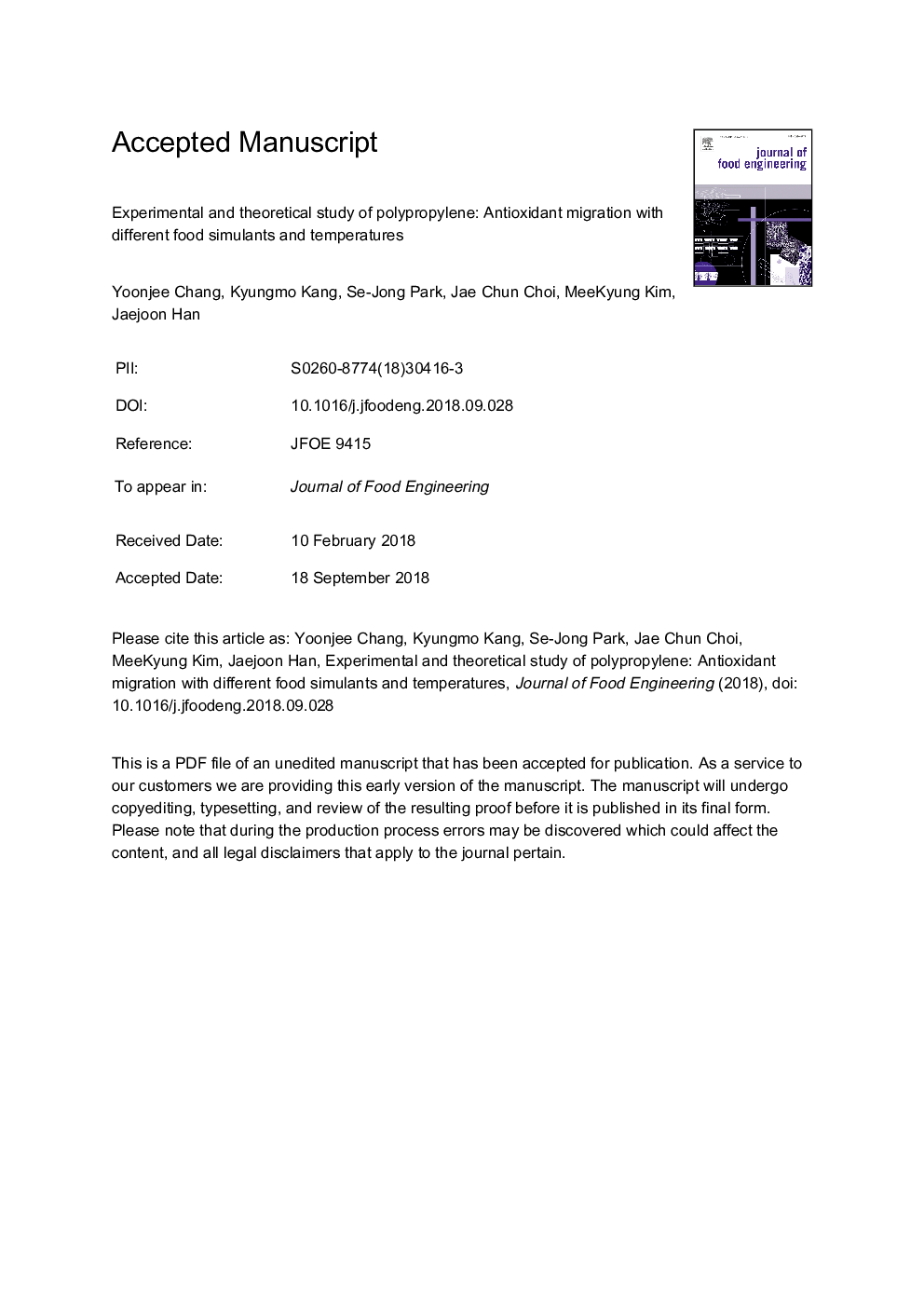| Article ID | Journal | Published Year | Pages | File Type |
|---|---|---|---|---|
| 11024361 | Journal of Food Engineering | 2019 | 31 Pages |
Abstract
Polypropylene is a synthetic plastic widely used in industry due to its low price and convenience. Although its wide applications, serious safety issues have been raised about toxic chemicals such as butylated hydroxytoluene (BHT) and pentaerythritol tetrakismethylene-(3,5-di-tert-butyl-4-hydroxyhydrocinnamate) (Irganox 1010) which may migrate from polypropylene packaging into foods. Here, the effects of severe processing conditions [autoclave heating (121â¯Â°C), microwave radiation (700â¯W), and freezer storage (â30â¯Â°C)] on migration behavior were confirmed. Mathematical models were used to estimate the migration behavior of these compounds, and the results were compared with data from real experimental analyses which were performed by high-performance liquid chromatography. Overall, the estimated values from the mathematical model were 1.5-2 times larger than the experimental values for all conditions, suggesting that the mathematical migration models provide reliable predictions of migration. Taken together, computational assessment of migration behavior may be an effective way to decrease the time and expense of food safety evaluations.
Related Topics
Physical Sciences and Engineering
Chemical Engineering
Chemical Engineering (General)
Authors
Yoonjee Chang, Kyungmo Kang, Se-Jong Park, Jae Chun Choi, MeeKyung Kim, Jaejoon Han,
